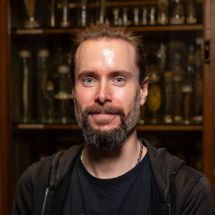 Handedness is the common feature of various systems with two states, from chirality of molecules, through asymmetries of animal bodies, to lateralized behaviors. In animals with external bilateral symmetry, inner asymmetry is often found in the side-specific placement of inner organs. But how is it that our bodies are inherently asymmetrical given that this feature is probably unrelated to the chiral nature of the molecular components? During this talk, I will be digging into the origins of animal left-right asymmetry and search for the underlying mechanisms driving our bodies to have distinct left and right sides.
Handedness is the common feature of various systems with two states, from chirality of molecules, through asymmetries of animal bodies, to lateralized behaviors. In animals with external bilateral symmetry, inner asymmetry is often found in the side-specific placement of inner organs. But how is it that our bodies are inherently asymmetrical given that this feature is probably unrelated to the chiral nature of the molecular components? During this talk, I will be digging into the origins of animal left-right asymmetry and search for the underlying mechanisms driving our bodies to have distinct left and right sides.
Vladimir Soukup is a research assistant at the Department of Zoology, Charles University Prague, where he studies comparative embryology, evolutionary-developmental biology and organogenesis in the so-called “non-model” vertebrates. His group’s interests lie in left-right body asymmetry establishment, development of the vertebrate head and the associated organs. His objects of study comprise embryos of amphibians and ray-finned fishes to tackle classical and long-term zoological questions.

